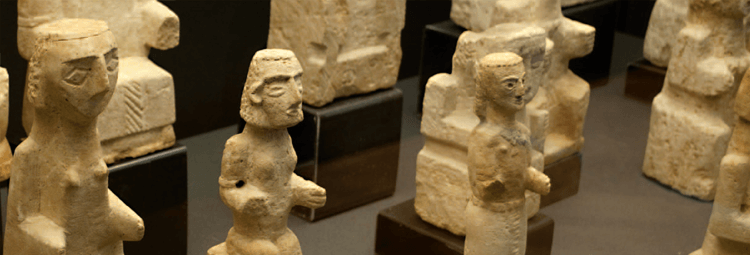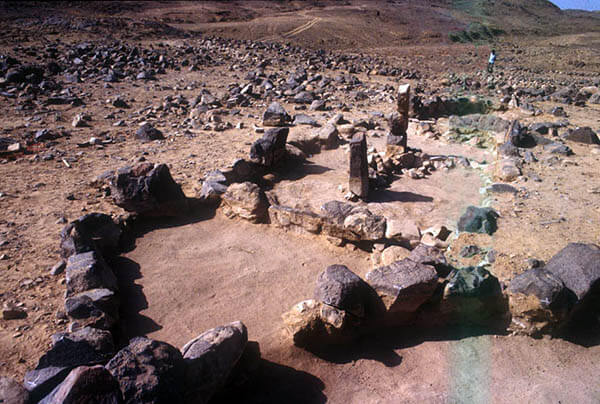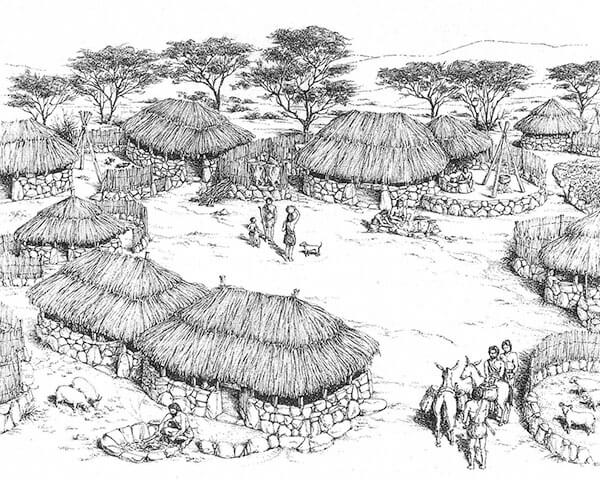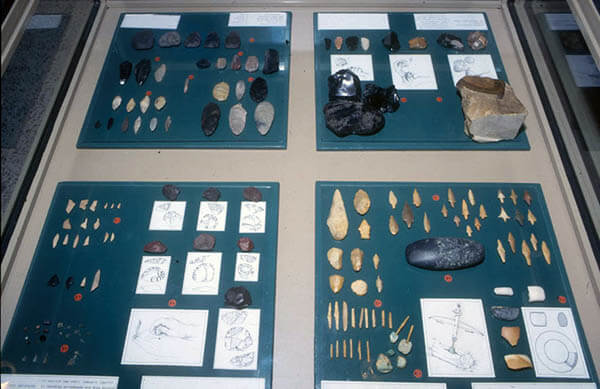
YEMEN – Sites

excavations in a site of the Wādī Yanā‘im
(al-A‘rūsh, Khawlān al-Tiyāl).
In the fall of 1981, de Maigret inspected a narrow area of the Khawlān al-Tiyāl and revealed, within the Wādī Yanāʿim, the remains of a settlement with circular houses (Fig. 1), pottery and stone tools that bore no comparison to anything then known about South Arabian antiquity. This was in fact the first Bronze Age settlement discovered in Yemen (Fig. 2). Many more were to be found in the area known as al-Aʿrush in subsequent campaigns from 1983 to 1985. The Italian Mission’s archaeological findings led us to develop a fairly complete picture of this Yemeni culture whose pottery and bronze objects showed clear affinities with contemporary cultures of Palestine and Syria. Despite the absence of writing, the interdisciplinary analysis of the archaeological site, architectural features, pottery, stone working and plant materials led to an understanding of the economic and social structure of this Bronze Age culture. The discovery of a stone idol, together with similar artefacts found by later Russian Mission in Hadramawt, further suggested that these cultures had developed cultic practices. The discovery of the Bronze Age in Yemen caused a considerable stir in the international scientific community, because this was the first demonstration of a culture that preceded the Sabaeans and brought Southern Arabia into the cultural context of the Northern regions of the Fertile Crescent.

in the Khawlān al-Tiyāl.

plateau and Ramlat al-Sabʿatayn desert.

Ramlat al-Sabʻatayn desert (1985).
In 1981 and 1983, our investigations on the highlands revealed the existence of multiple archaeological sites pre-dating ceramic ware and thus dating back to the Palaeolithic and Neolithic periods (Fig. 3). Stone tools found in the plain of Maʿbar in Northern Yemen pointed to the presence of an evolved Lower Palaeolithic culture, and on the highlands of the Khawlān to an intense Middle Palaeolithic occupation. These surveys also brought to light a series of important Neolithic sites at al-Aʿrush and in the central part of al-Hadā. Excavations carried out in the settlements of Wādī ath-Thayyilah and Jabal Qutrān revealed the first signs of domestication of plants and animals and clarified the features of their dwellings and chronology. The investigations were extended to the coastal plain, in the Tihāmah, and the desert hinterland in the Ramlat as-Sabʿatayn, to determine whether the difference in the geomorphology and climate would have resulted in different strategies for the exploitation of the natural resources. In fact, investigations of the Tihāmah coastal site of al-Shūmah indicated an economy based on fishing, while investigation in the Ramlat al-Sabʿatayn (Fig. 4), then an extensive area of lakes, showed that subsistence depended mainly on hunting.
Starting from 1983 to 1992, the Italian Foreign Ministry and the Yemeni General Organization of Antiquities, Manuscripts and Museums through the Istituto Italiano per il Medio ed Estremo Oriente (IsMEO) in Rome, directed by Prof. Gherardo Gnoli, supported a program of archaeological training in Yemen for preparation of specialized Yemeni professionals.

Countries
